Motorcycle.com's 2018 Electric Motorcycle Buyer's Guide

What's out on the electric market today
Updated August 2020
At Motorcycle.com, we’ve been on the forefront of electric motorcycle news for as long as we can remember. Long heralded as the future of two (and four) wheels, nearly silent propulsion via electrons instead of gasoline appears to be well underway. On the motorcycle side, the big OEMs are seemingly slow to follow the trend the car guys have taken, though Harley-Davidson has jumped in the waters. This, however, has opened the doors for smaller companies to take over the electric bike market and innovate on their own.
The problem with being a niche electric motorcycle manufacturer is that often the general consumer doesn’t realize you exist. You’d be hard-pressed to find a motorcycle rider not familiar with the name Honda or Harley-Davidson, but if you ask the average rider to name one of the best electric motorcycles, chances are, you’ll be met with a blank stare.
Discuss this story more at our Electric Motorcycle Forum
Which is where we come in. Here, we present Motorcycle.com’s 2020 electric motorcycle buyer’s guide, wherein we give you a quick snapshot of each electric motorcycle available today. This guide is presented in alphabetical order by manufacturer and only includes motorcycles. Other things you won’t see here are the seemingly endless amounts of electric two-wheelers coming from China. For the purposes of this guide of the best electric motorcycles, we’re choosing to exclude them.
*Update* A lot has changed in the e-motorcycle landscape since this article was originally published in 2018. Harley-Davidson finally released the production version of the Livewire, and Zero launched both the SR/F and SR/S models. Unfortunately, we’ve lost a few players also. This, sadly, includes Alta, the BMW C-Evolution scooter, and the Lito Sora. Below is a recap of who’s left.
Best Electric Motorcycles
Energica
Coming to us from Italy is Energica and its three model offerings on our list of best electric motorcycles. First on the list is the Ego, Energica’s Italian electric sportbike. Boasting a 13.4 kW, air/oil-cooled lithium polymer battery and air/oil-cooled permanent magnet motor, the Ego puts out a claimed 107kW (roughly 145 hp) and 148 lb-ft of torque – numbers Energica says gives it greater performance than 600cc internal combustion sportbikes.
Upgrade to the Ego+ and battery capacity jumps to 21.5 kW, thanks to technology linked directly to the Energica Ego Corsa raced exclusively in the MotoE championship. Torque also gets a boost compared to the base model, to 159 lb-ft. The huge battery also gives the Ego a claimed range of up to 250 miles, the longest claimed range of any production electric motorcycle.
It’s all wrapped inside a steel trellis frame, typical for an Italian motorcycle. The brains for all Energica models is the VCU (Vehicle Control Unit) designed and developed completely in-house to best manage power.
Boasting technologies like different ride modes, regenerative braking, a “coast” feature allowing the motorcycle to freewheel, Brembo brakes, Marzocchi fork, Bitubo shock, and a colorful 4.3-inch TFT display, the Ego comes loaded with high quality components, much like you’d expect from an Italian sportbike. With a Mode 4 DC supercharger, reaching 80% charge from zero can be achieved in under 30 minutes. Otherwise, reaching 100% from nil can take as much as eight hours from a standard 110v wall outlet. We’ve ridden the Ego and came away impressed with the power and the way it’s delivered, but had small gripes about the handling and big gripes about its excessive weight, coming in at nearly 600 lbs. Price starts at $19,540 for the base version at $23,870 for the Ego+. Visit the Energica website for more information.
Eva RibelleThe Eva Ribelle is what happens when you take the Energica Ego, strip it of some fairings, and mount handlebars to it. Streetfighters are all the rage lately, and at their core, streetfighters are essentially naked versions of their sportbike derivatives with better ergonomics. The Eva Ribelle is no different. Battery and motor remain the same (meaning the Ribelle gets the 21.5 kW battery). Price for the Eva Ribelle is slightly less than the Ego+, at $22,160, which might be the deciding factor for some as to whether they prefer the sportbike or the naked. Interestingly, we last rode the Eva in 2016, and back then T-Rod scratched his head about the reduced performance output from the Eva despite sharing the same components as the Ego. However, a look at the 2018 Eva web page now states equal performance between the two. Either way, the same highlights and lowlights remain.
Eva Esseesse9If the streetfighter fad is already losing its luster for you, maybe the newest fad – cafe racers – is more your thing? If so, the Eva Esseesse9 (SS9, named after Via Emilia (SS9), an ancient Italian road built in 187 BC to connect Rimini to Piacenza, along Italy’s Motor Valley where Energicas, Ferraris and Lamborghinis are manufactured) might be for you.
Based on the same underpinnings as the Ego and Eva, the Eva Esseesse9 and Esseesse9+ take their styling in a more classic direction. The angular headlight from the Eva is gone, replaced with a classy round unit. A pleated brown leather seat is less dished than the Eva’s, bodywork is slightly tweaked, and bar and peg position are revised for a little more comfort.
Performance-wise, despite carrying the same hardware as the Ego and Eva, overall output for the base Esseesse9 is slightly down. Still, a claimed 80 kW (109 hp) and 133 lb-ft of torque are nothing to sneeze at, and when Kevin Duke rode the Esseesse9, he confirmed the bike is still plenty fast in a straight line. Full details about the bike can be found in the link to Duke’s review, but needless to say, the highs and lows from the Ego and Eva still remain.
The Esseesse9+ gets a boost in torque to 148 lb-ft, along with the 21.5 kW battery. Energica says mileage can reach 250 if you’re tooling on city streets, but can still top 100 miles in highway use. Like all Energicas, DC fast charging allows you to fill up with electrons quickly.
Harley-Davidson
At long last, the Harley-Davidson Livewire is finally here, and some would say it’s the most advanced Harley to date. Positioned low and contrasted by its silver color, the liquid-cooled internal permanent magnet motor – codenamed the H-D Revelation Motor – is a focal point for the eye and produces a claimed 105 hp (78 kW) and 86 lb-ft of torque the moment you twist the throttle. Housed above it is the RESS – Renewable Energy Storage System – or battery to you and me. Rated at 13.6 kWh nominal (15.5 kWh max), Harley stands behind it with a warranty of five years with no mileage limit.
The modular frame bolts together instead of using welds, leaving the door open to future iterations of an electric Harley with the same basic architecture. Showa provides the suspension and Brembo supplies the brake components – all top-shelf stuff.
The interconnectedness of the Livewire isn’t what you may be used to on Harleys. With the ability to connect to your phone via Bluetooth, you can see all sorts of data. What you’re also not used to on the Livewire, compared to other Harleys, is the lack of sound! It scoots about with immediacy and can travel nearly 150 city miles (though real-world mileage on any electric motorcycle varies greatly depending on how you’re riding).
DC fast charging is the primary method of recharging the Livewire – there are no provisions for Level 2 charging. This may be a large hurdle to overcome for some riders.
KTM
Available in Europe for some time now, the KTM Freeride E-XC is one of three electric models in KTM’s lineup – and the only adult-size model coming to the US. While not street legal Stateside despite carrying a headlight and taillight, the E-XC is a great tool for feeling like a hero on the trails or single track without disturbing the neighbors or wildlife. A 2.6 kWh battery is on the small side, but it’s quickly swappable (for the price of another battery) and mated to a liquid-cooled motor, pumping out a peak output of 21.5 hp and 31 lb-ft of torque – comparable or superior to 250cc machinery. Since the E-XC is essentially a glorified trials bike, former E-i-C Duke couldn’t wipe the smile off his face after riding one last year. Extremely fun – and easy – to ride, while delivering the off-road ability KTM is known for. The big downside is charging has to be done through a 220v outlet, which is hard to do when you’re on a trail. Still, it’s an interesting proposition for $8,299 and a welcome thing to behold from a major OEM.
SX-E 5/Husqvarna EE 5
KTM/Husqvarna’s other electric offering in the US is aimed at the littlest of riders. The SX-E 5 and EE 5 (pictured) rival 50cc internal combustion dirtbikes little kids have been growing up on for decades. Its 907 Watt-hour battery can give up to two hours of riding, or roughly 25 minutes of moto if your kid is a fast ripper. The air-cooled motor has an output of 5 kW, putting it in similar territory as the aforementioned 50cc gas bikes.
Six different ride modes are available to suit a wide variety of rider skill levels and the adjustable seat accommodates the wide variety of kid sizes out there, too. Whatever size or skill level your child is at, underneath them will be a steel frame, WP suspension, a tip-over switch, and wave discs to slow down. Pricing starts at $5,099 for the KTM, $5,199 for the Husqvarna.
Lightning
With a single pass of 218 mph at the Bonneville Salt Flats (and a 215 mph average!), the LS-218 is the fastest production motorcycle – gas or electric – in the world. There’s no doubt the LS-218 is fast, and after riding an early version of the bike in 2012, Road Test Editor Troy Siahaan couldn’t help but giggle like a schoolgirl. The source of this speed comes from the IPM liquid-cooled motor, which Lightning claims pumps out 200 hp and 168 lb-ft of torque. Three battery options include a 12 kWh, 15 kWh, or 20 kWh pack, capable of up to 180 miles (claimed) per charge. Like the motor and battery, the rest of the LS-218 screams performance. Öhlins handles suspension, while Brembo handles braking duties. Forged aluminum wheels help the 495-lb e-sportbike tip side-to-side a little easier. If you haven’t noticed by now, the LS-218 is all business, and doesn’t suffer fools gladly. With a base price of $38,888, it’s actually not terribly unreasonable for the wealthy e-bike enthusiast looking for an adrenaline rush like no other.
Zero
When it comes to electric motorcycles, Zero is likely the most well-known brand out there so it’s no surprise to see them on our list of best electric motorcycles. One of the first pioneers of the current electric motorcycle movement, Zero has all the others beat when it comes to mass production. With that, say hello to the Zero SR/F. The first new platform from Zero since 2013, the SR/F is a massive shift for Zero. For starters, the SR/F incorporated industrial design from the beginning of the project, and it’s clear to see the SR/F just looks like a motorcycle, whereas past designs may have resembled giant battery boxes with wheels attached.
The battery is a 14.4 kWh piece with a standard 3 kW charger. You can upgrade in 3 kW intervals all the way up to 12 kW of charging power to bring charge times via Level 2 stations down further. Showa provides the suspension, J.Juan supplies the brakes, and the whole thing is interconnected via the Zero app on your smartphone.
The overall ride is impressive from the SR/F, as you can read about in our First Ride Review. Acceleration is quick, with boundless amounts of torque available at your disposal. This is easily the most advanced Zero to date, on par with flagship electrics from other OEMs.
Zero SR/S
Apart from the styling, including the stacked LEDs in the headlight, the underpinnings of the SR/S remain the same as the SR/F. Same battery, motor, and controller, though little adjustments were made, like with the suspension settings.
Zero SA long way from the company’s humble beginnings as makers of glorified mountain bikes, the Zero S and SR had arguably set the bar other electric motorcycle manufacturers looked up to in terms of road-legal, everyday motorcycles – at least until the SR/F and SR/S came on the scene.
The Zero S comes with a ZF7.2 battery, with the Power Tank option available. With the 7.2 you get 7.2 kWh max power (6.3 kWh nominal). This leaves an extra storage compartment where an additional battery would have otherwise sat. Zero claims 34 hp and 78 lb-ft for the ZF7.2 configuration, with range coming in at 89 city miles and 45 highway.
Other components include Showa suspension, Pirelli tires, J.Juan braking systems, Bosch ABS, direct drive transmission and belt drive. This produces an incredibly low-maintenance vehicle, and batteries are warrantied for five years, unlimited miles. We’ve ridden the Zero S extensively at Motorcycle.com, and have always been impressed by how powerful they are while also being easy to ride. Pricing starts at $10,995 for the ZF7.2. All prices before federal and state incentives.
Zero SRHere we go with R suffixes again. In the case of the Zero SR, power and torque compared to the standard S get turned up to 11. First, the battery pack gets a bump to the ZF14.4, which delivers 14.4 kWh max capacity (12.6 nominal), while the Power Tank option bumps the number even further to 18.0 kWh (15.8 kWh nominal). What really sets the R apart is its uprated motor with high efficiency, hi-temp magnets, and the 775 amp brushless motor controller paired with it. Standard S models don’t see the hi-temp magnets and get 550-amp controllers. The bump in hardware gives the SR a claimed 70 hp, and 116 lb-ft of torque. This extra twist is immediately noticeable and addicting. From there componentry stays the same as the standard S, however, price takes an obvious jump to $15,495 or $18,390 with the Power Tank.
Zero DSIn the case of the DS, more off-roading ability is its forte, while the S prefers to stay on the pavement. Save for longer-travel Showa suspension, a 19-inch front wheel, and Pirelli MT-60 sorta-knobby tires, the S and DS share lots of identical bits. Battery comes from the ZF14.4 kWh unit, while motor and motor controller stay the same as the SR. If light-duty dual-sport action is more your thing, the DS is where to look. Pricing starts at $18,995.
Zero DSRIt’s only obvious the DS would also come in an R version like its street-based S sibling. Since the platforms for the S and DS are virtually identical, fitting the uprated battery, motor, and controller was a no-brainer. Otherwise, expect to see the same components of the standard DS, with pricing set at $21,890.
Zero FXIf you’re more of a trail rider, then the Zero FX may speak to you. The street-legal FX platform is entirely different from the S/DS platform, with the main difference being the ability to swap the two batteries on the FX. Dimensionally, the FX platform is physically narrower as well, simulating more of a dirtbike in its look, feel, and purpose. Available in two versions, the ZF3.6 is simply a version of the FX with one battery, while the ZF7.2 carries both batteries. The Z-Force 75-5 air-cooled battery is the same you’d find on the Zero S and DS models, as is the 550-amp controller.
With the 3.6 setup, range is claimed at 46 miles in the city, down to 19 on the highway. Add the second battery and the numbers go up to 91 city and 39 highway. However, highway riding is entirely missing the point of what the FX can do. With nearly nine inches of suspension travel from the Showa bits, and Pirelli Scorpion MT 90 tires, riding silently off the beaten path is where the FX likes to roam. We’ve ridden an older version of the FX, and while many components remain the same, the battery tech has stepped up since the 2014 test. Price for the FX with ZF3.6 is $8,995, while ZF7.2 versions weigh in at $10,995.
Zero FXSWhen a competent off-road platform already exists, you might as well slap on some 17-inch wheels and tires and play on the pavement. Hence the Zero FXS. Born from the FX platform, the FXS is also available with one or both battery options, providing similar power and range numbers. The obvious difference being 17-inch wheels, Pirelli Diablo Rosso II tires, and slightly less suspension travel. Built for slicing through the concrete jungle, the FXS makes quick work of city traffic and provides all the fun we’ve come to expect from a supermoto. In fact, we were pleasantly surprised when the Zero beat a gas supermoto, when we tested an FXS against a Suzuki DR-Z400SM. Price for the FXS stays consistent with the Zero FX.

Motorcycle.com presents an unrivaled combination of bike reviews and news written by industry experts
More by Motorcycle.com Staff




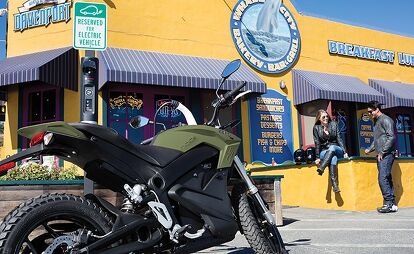















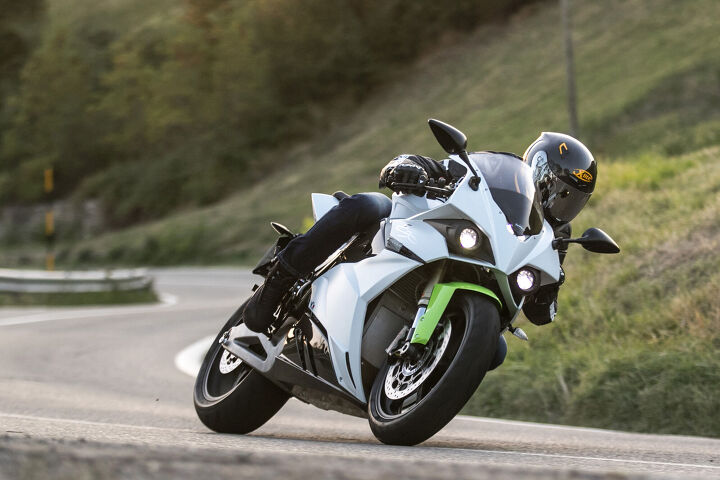


















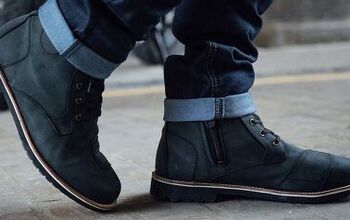

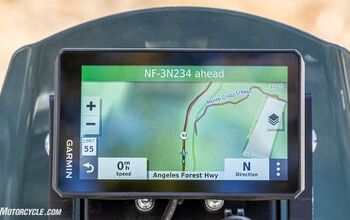
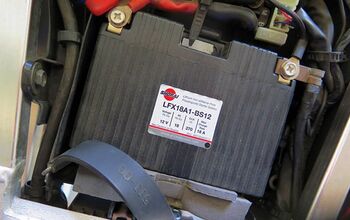














Comments
Join the conversation
I've wanted an electric motorcycle probably since MO started covering them. But even though I've mostly ended my multi-day, 1,000+ mile rides, I still can't take an e-bike up the coast to Mom's house, which is 170 miles one-way. And they're still too expensive for a toy to putt around town on.
Close, but still no cigar.
Most people agree that eBikes are the future, whether we like it or not, but hardly anyone is buying. And they won't buy until eBikes deliver compelling advantages in function (not just saving in fuel and maintenance).
Right now speed and/or longer range means big batteries which means big cost, big weight, and long charge times (on standard). You can compromise downward in speed or range to get lighter and cheaper and faster recharges, but everyone wants range and few want to give up speed unless you just need something to fill the scooter role. But then will you pay 5 digit prices for a scooter to run errands?
Few of the equations buyers run when considering eBikes end with '=yes'. We need some additional benefit - something as impactful as the early hybrid cars and today's all electric cars getting car pool lane access, but for motorcycles. I think this may be already here with off-road eBikes, but something needs to happen for us street riders to get more exited.